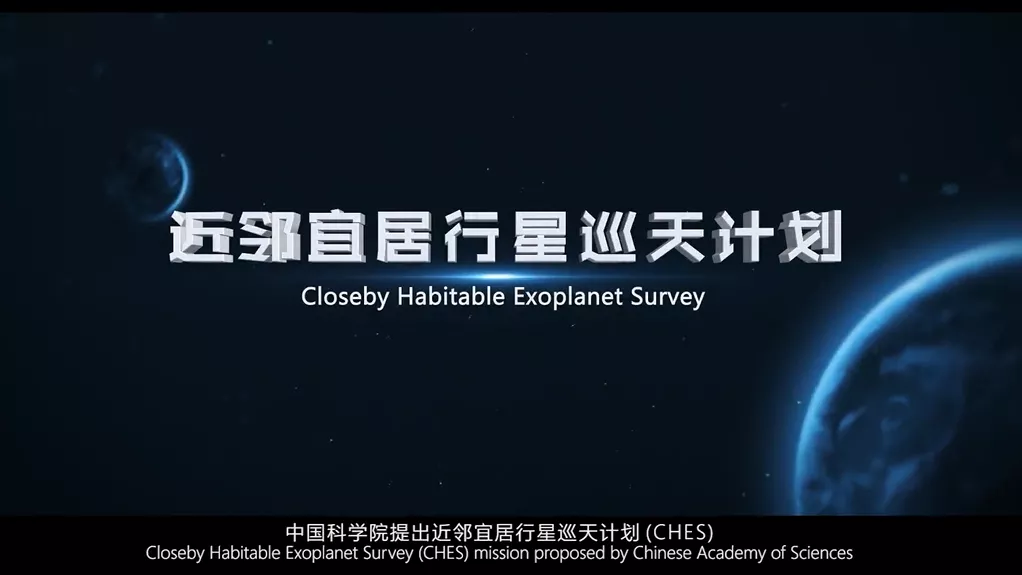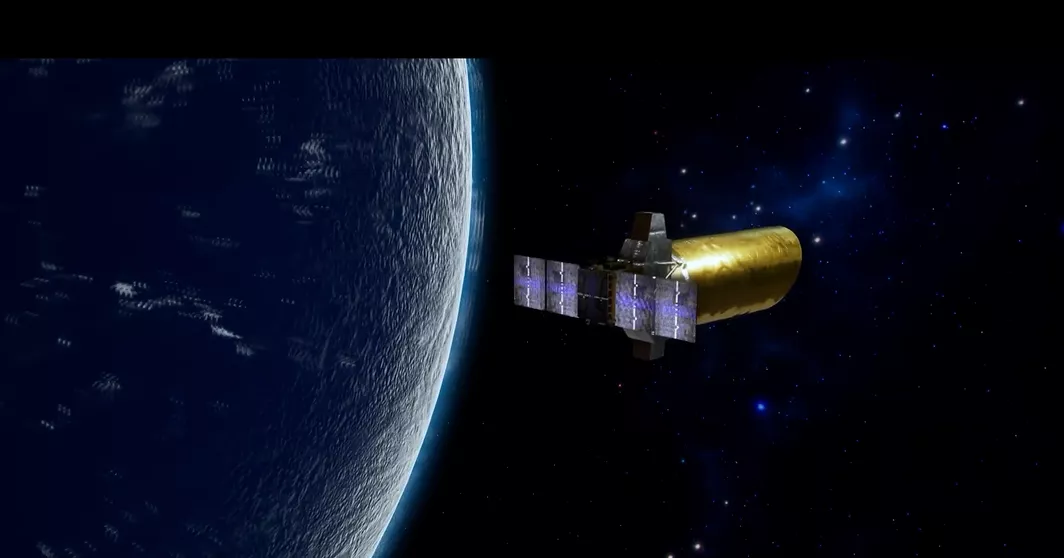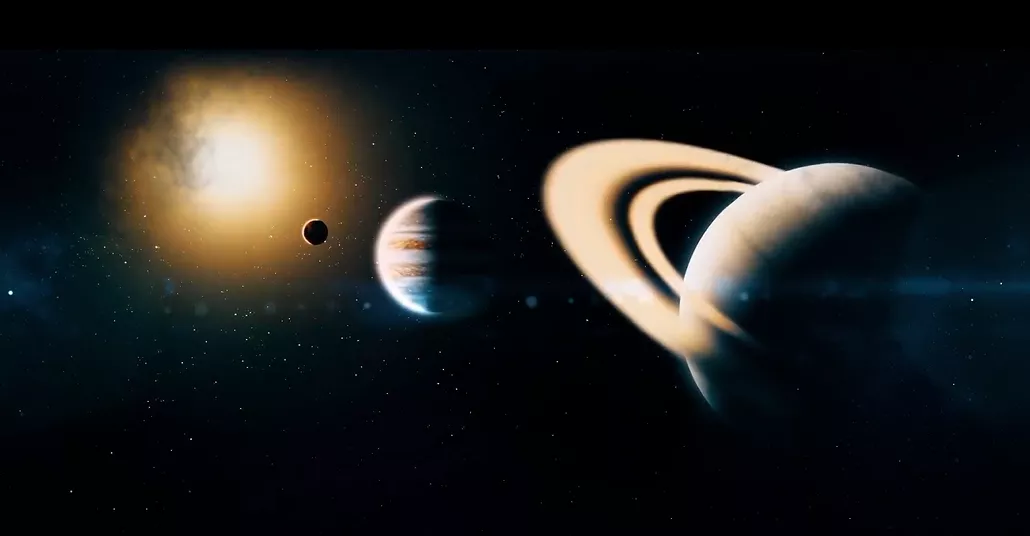For thousands of years, whether there are other life in the universe and whether there is a second home suitable for human habitation has attracted scientists to look deeper into the universe. Recently, the reporter learned from the Zijinshan Observatory of the Chinese Academy of Sciences that Chinese scientists have proposed a "nearby habitable planet survey plan" (hereinafter referred to as "ches").
It is planned to launch a high-precision astrometric space telescope with a 1.2-meter aperture. It will operate at the Lagrange L2 point for at least five years. It is planned to detect 100 solar like stars about 32 light years away from the earth. It is expected to find the first habitable zone outside the solar system, "earth 2.0". This will be the first international space exploration mission dedicated to finding habitable earth like planets around nearby solar like stars.
"As far as the evolution of the universe is concerned, we cannot predict what will happen to the earth's environment in 50-100 years. We are trying to find out whether there are other habitable planets in the universe, especially around the nearby stars of the solar system, and then explore whether there are life or advanced civilizations on these planets." Jijianghui, a researcher at the Zijinshan Observatory of the Chinese Academy of Sciences and the project leader of the "nearby livable planet survey plan", told Science and Technology Daily that scientists hope to bring a pair of insight to the search for "earth 2.0" through the implementation of this plan.

We will look for neighboring planets with the same mass as the earth and in the habitable zone
Since the discovery of the first extrasolar Jupiter like planet in 1995, more than 5000 extrasolar planets have been discovered and confirmed. These planets vary in size and shape, involving types such as hot wood star, sub Neptune, rocky planet, super earth, etc.
Gliese 581c, discovered in 2007, is considered to be the first earth like planet found in the habitable zone. In 2016, astronomers discovered another earth like planet, be Lin, located in the habitable zone around the nearest star to the earth, be Lin, with a minimum mass of 1.3 Earth masses and a revolution period of only 11.2 days.
"The habitable zone in the solar system is between Mars and Venus, and the earth is in it." According to jijianghui, astronomers call the planetary orbit range suitable for life in the planetary system the "habitable zone".
In the "habitable zone", the average surface temperature of the planet can maintain the stable existence of liquid water, so it may have conditions for the existence of life similar to the earth. At the same time, the stellar radiation and activity here will not be too strong, so as to avoid the ionization of water molecules and carbon dioxide molecules in the planetary atmosphere, or even the stripping of the planetary atmosphere.
"At present, about 50 earth like planets in the habitable zone outside the solar system have been discovered, but most of them are several to ten times the mass of the earth, which is equivalent to a 'super earth'. Most of them are thousands of light-years away from the earth. Moreover, many of the discovered planets are around the red dwarfs. The surface temperature of the red dwarfs is lower than 3500 Kelvin, and the space environment is harsh, and there will be strong flares, so we pay more attention to the distance between the earth and the earth The sphere is about 32 light-years away. There is no habitable zone 'earth 2.0' around stars like the sun. " Jijianghui said that the "earth 2.0" or "Twin Earth" that ches plans to find is a planet with the same mass as the earth, whose orbit is in a habitable zone, and whose atmosphere or surface may have liquid water to maintain life.

Concept map of "nearby habitable planet survey plan".
"Even if human beings do not have the ability to reach these earth like planets, it does not affect our thinking about where human beings will go in the universe and whether there are other planets like the earth." Jijianghui said.
The Lingxing method, which can draw the outline of exoplanets, is difficult to "weigh" the planets
Whether the earth is the only lonely planet with life in the vast sky attracts scientists from all over the world to spare no effort in deep space exploration. They deployed "planet hunters" to capture planet tracks in space and on earth.
In space, the Kepler space telescope and Tess satellite of the United States have taken over the exploration of extrasolar planets, and so far more than 3400 have been discovered.
On the ground, the Spanish German carmenes project uses the 3.5-meter telescope in southern Spain, combined with near-infrared observation and optical ladder grating spectrometer to search for earth like planets around red dwarfs; The new spectropolarizer "spirou" developed by the Canadian French Hawaiian telescope and the "habitable zone planet detector" of the American MacDonald Observatory search for habitable planets around red dwarfs in the near-infrared band through the apparent velocity method.
Jijianghui introduced that at present, extrasolar planet detection methods include transit method, apparent velocity measurement method, astrometry method, direct imaging method, micro gravitational lens method, etc. Most of the exoplanets were discovered by the apparent velocity measurement and transit method.

Concept map of "nearby habitable planet survey plan".
"About 73% of the stars in the universe are red dwarfs. Because the effective temperature of red dwarfs is low, the habitable zone is close to the host star, and the mass and volume are small, the planets around red dwarfs are easy to be detected by transit star method and apparent velocity method." Jijianghui explained that "transit" means that when the planet passes in front of the star, it will block the light emitted by the star. Therefore, the transit of extrasolar planets can be tracked through the periodic dimming of the brightness of the star. This is like the transit of Venus. When Venus moves slowly from the sun's surface, it blocks a small part of the sun, and the sun looks dark. Transit observations can infer the size and orbital period of exoplanets according to the periodic changes of stellar luminosity. However, Ji Jianghui does not deny that although the Lingxing method is effective, its detection efficiency is limited.
"First of all, to see the transit phenomenon, there are special requirements for the orbit of the planet. The planet needs to pass right through the direction of the star toward the earth, almost in the direction of the observer's line of sight. However, the orbit of the planet is randomly distributed, so the probability of transit detected by some space telescopes is only 5 in 1000. Secondly, the star's luminosity weakens and darkens, which may be caused by the sunspot or stellar activity of the star, so transit The method also needs to be verified by other ground detection methods. So even though Tess has observed nearly 4000 planetary candidates, only more than 200 planets can be identified. Third, the Lingxing method can only measure the radius of the planet and cannot directly give the mass of the planet, which is the key parameter to describe Earth 2.0. " Jijianghui said.
Innovative detection method, ches detection accuracy will reach micro angle second level
Unlike Tess and other satellites, which use the transit detection method, ches plans to use the space micro angle second level high-precision astrometry method to accurately measure the micro angle second level star spacing between a target star and 6-8 reference stars. This slight change reflects the very small swing of the target star caused by the gravitational disturbance of its rotating planet.
"Generally speaking, if there are planets around a star, the planets will cause the star to produce a small amplitude periodic swing. After excluding the movement of the star itself, the smaller the swing amplitude of the star, the smaller the mass of the planets around it, and vice versa. By observing the small changes in the position of the star, we can find out whether there are habitable planets around the star, and calculate their real mass and orbital parameters." Jijianghui said.
To explore "earth 2.0" in the vast universe, we need a pair of clear eyes. Jijianghui said that the scientific payload of ches is a high image quality, low distortion and high stability optical telescope with an aperture of 1.2m and a focal length of 36m, which can realize full field near diffraction limit imaging.

An artistic conception of exoplanets.
According to the plan, the ches space telescope will be put into the halo orbit of the second Lagrange point of the solar terrestrial system, and will maintain a stable operation time of at least 5 years in this orbit. During this period, 100 solar like stars will be scientifically explored, of which each star will be observed no less than 50 times, and about 50 earth like planets are expected to be discovered.
The detection accuracy of ches will reach the unprecedented micro angle second level. Ji Jianghui made an example, "this is equivalent to looking at the moon from the earth and distinguishing the edge of a dollar coin on the moon." He said that after years of efforts, the ches team has made breakthroughs in key technologies such as micro pixel star spacing measurement, which can meet the detection accuracy requirements of habitable planets. If ches is approved, it will be the first space exploration mission in the world to use high-precision astrometry to search for habitable planets.
Jijianghui said that in addition to detecting habitable planets, this mission will also make corresponding contributions to frontier scientific research such as dark matter and black holes.
If ches can successfully "capture" the trajectories of these earth like planets, how can we judge whether they will become livable "children of choice"? Ji Jianghui explained, "in addition to judging the quality of planets and whether they are livable, we should also see whether they have water and oxygen, and see the differences between these planets and the planets that have been found." In addition, there are many other conditions for the stable existence of life, such as a long enough life span of stars and planets for life, appropriate stellar luminosity, stable near circular planetary orbit and rotation inclination, appropriate planetary atmosphere and planetary magnetic field, etc.
How can humans reach earth like planets in the habitable zone 32 light-years away from the earth? Ji Jianghui imagined, "first of all, it needs the blessing of the interstellar navigation ability. For example, the flight speed may need to reach the sub light speed. In addition, it also needs to understand the distribution of these planets. This requires a comprehensive 'interstellar census' of the sun like stars 32 light years away from the earth, so as to expand space for the future development of mankind."
Editor: Zhang Shuang
Reviewed by: Zhu Li